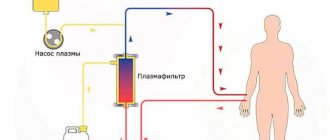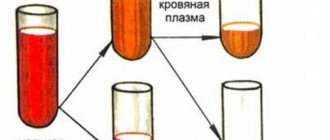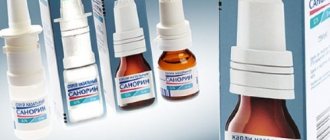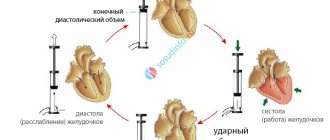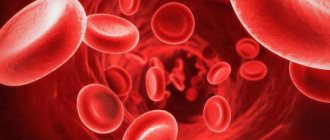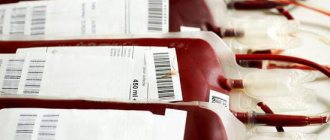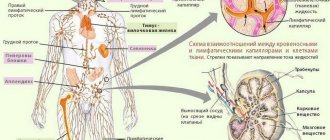Plasma functions
Blood plasma performs many functions, including:
- transportation of blood cells, nutrients, metabolic products;
- binding of liquid media located outside the circulatory system;
- making contact with body tissues through extravascular fluids, thereby achieving hemostasis.
Donor plasma saves many lives
How to get plasma?
Plasma is obtained from the blood using centrifugation. The method allows you to separate plasma from cellular elements using a special apparatus without damaging them . The blood cells are returned to the donor.
The plasma donation procedure has a number of advantages over simple blood donation:
- The volume of blood loss is less, which means less harm is caused to health.
- Blood can be donated for plasma again after 2 weeks.
There are restrictions on plasma donation. Thus, a donor can donate plasma no more than 12 times per year.
Plasma donation takes no more than 40 minutes.
Plasma is the source of such important material as blood serum. Serum is the same plasma, but without fibrinogen, but with the same set of antibodies. They are the ones who fight pathogens of various diseases. Immunoglobulins contribute to the rapid development of passive immunity.
To obtain blood serum, sterile blood is placed in an incubator for 1 hour. Next, the resulting blood clot is peeled off the walls of the test tube and placed in the refrigerator for 24 hours. The resulting liquid is added to a sterile vessel using a Pasteur pipette.
Protein fractions, total protein
What are protein fractions (Serum Protein Electrophoresis, SPE)?
Total serum protein consists of a mixture of proteins with different structures and functions. Separation into fractions is based on different mobility of proteins under the influence of an electric field. Usually, several standard fractions are isolated by electrophoresis:
- albumins;
- alpha1-globulins;
- alpha2-globulins;
- beta globulins;
- gamma globulins;
- beta-1-globulins;
- beta-2-globulins.
The albumin fraction normally makes up 40-60% of the total protein. Albumin is the main protein in blood plasma. Plasma albumin is rapidly renewed. During the day, 10-16 g of protein of this fraction is synthesized and decomposed. Albumin synthesis occurs in the liver, depends on the availability of amino acids and, therefore, the rate of synthesis decreases during periods of protein deficiency.
Main functions of albumin:
maintaining colloid-osmotic (oncotic) plasma pressure and circulating blood volume;
transport function: binding to bilirubin, cholesterol, bile acids, metal ions (in particular calcium), hormones (thyroxine, triiodothyronine, cortisol, aldosterone), free fatty acids and drugs entering the body from the outside (antibiotics, salicylates). Thus, albumin participates in mineral, pigment, hormonal and some other types of metabolism, regulating the content of free (not associated with protein fractions) biologically important substances that have higher activity. Thanks to this function, albumin plays a significant role in the detoxification processes of the body.
The alpha1-globulin fraction includes acute-phase proteins:
- alpha1-antitrypsin (the main component of this fraction) is an inhibitor of many proteolytic enzymes - trypsin, chymotrypsin, plasmin, etc.;
- alpha1-acid glycoprotein (orosomucoid) - has a wide range of functions, in the area of inflammation it promotes fibrillogenesis.
Globulins include transport proteins:
thyroxine-binding globulin, trancortin - binds and transports cortisol and thyroxine, respectively;
alpha1-lipoprotein (HDL) - is involved in lipid transport.
The alpha2-globulin fraction predominantly includes acute-phase proteins:
- alpha2-macroglobulin - participates in the development of infectious and inflammatory reactions;
- haptoglobin - forms a complex with hemoglobin, released from red blood cells during intravascular hemolysis, which is then utilized by the cells of the reticuloendothelial system;
- ceruloplasmin - specifically binds copper ions, and is also an oxidase of ascorbic acid, adrenaline, dihydroxyphenylalanine (DOPA), capable of inactivating free radicals
- apolipoprotein B.
Alpha lipoproteins are involved in lipid transport.
The beta globulin fraction contains:
- transferrin - transports iron;
- hemopexin - binds heme, which prevents its excretion by the kidneys and iron loss;
- complement components - participate in immune reactions;
- beta lipoproteins - participate in the transport of cholesterol and phospholipids;
- part of immunoglobulins.
The gamma globulin fraction consists of:
- immunoglobulins (in quantitative descending order - IgG, IgA, IgM, IgE) - provide the body's humoral immune defense against infections and foreign substances.
- In many diseases, there is a violation of the ratio of plasma protein fractions (dysproteinemia). Dysproteinemias are observed more often than changes in the total amount of protein and, when observed over time, can characterize the stage of the disease, its duration, and the effectiveness of the treatment measures.
Indications for the purpose of analysis:
- acute and chronic inflammatory diseases (infections, collagenosis);
- oncological diseases;
- eating disorders and malabsorption syndrome.
When are the values increased?
Albumen:
- dehydration;
- shock.
Alpha1-globulin fraction (increased alpha1-antitrypsin):
- pathology of the liver parenchyma;
- acute and chronic inflammatory processes (infections and rheumatic diseases);
- tumors;
- trauma and surgery;
- pregnancy (3rd trimester);
- taking androgens;
Alpha2-globulin fraction:
increased alpha2-macroglobulin (nephrotic syndrome, hepatitis, liver cirrhosis, taking estrogens and oral contraceptives, chronic inflammatory process, pregnancy);
increased haptoglobin (inflammation, malignant tumors, tissue necrosis).
Beta globulin fraction:
- primary and secondary hyperlipoproteinemia;
- monoclonal gammopathies;
- taking estrogen, iron deficiency anemia (increased transferrin);
- pregnancy;
- obstructive jaundice;
- myeloma (IgA type).
Gamma globulin fraction:
- chronic liver pathology (chronic active hepatitis, cirrhosis);
- chronic infections, sarcoidosis, parasitic infestations;
- autoimmune diseases (rheumatoid arthritis, systemic lupus erythematosus);
- lymphoproliferative diseases (myeloma, lymphoma, Waldenström macroglobulinemia).
When are the values lowered?
Albumen:
- eating disorders;
- malabsorption syndrome;
- liver and kidney diseases;
- tumors;
- collagenoses;
- burns;
- overhydration;
- bleeding;
- analbuminemia;
- pregnancy.
Alpha1-globulin fraction (increased alpha1-antitrypsin):
- hereditary deficiency of alpha1-antitrypsin;
- Tangier's disease.
Alpha2-globulin fraction:
- decrease in alpha2-macroglobulin (pancreatitis, burns, trauma);
- decrease in haptoglobin (hemolysis of various etiologies, pancreatitis, sarcoidosis).
- Beta globulin fraction:
- hypo-b-lipoproteinemia;
- IgA heficitis.
Gamma globulin fraction:
- immunodeficiency states;
- taking glucocorticoids;
- plasmapheresis;
- pregnancy.
Globulins
The remaining plasma proteins are classified as globulins, which are large in molecular weight. They are produced in the liver and in the organs of the immune system. Main types:
- alpha globulins,
- beta globulins,
- gamma globulins.
Alpha globulins bind bilirubin and thyroxine, activate the production of proteins, transport hormones, lipids, vitamins, and microelements.
Beta globulins bind cholesterol, iron, vitamins, transport steroid hormones, phospholipids, sterols, zinc and iron cations.
Gamma globulins bind histamine and participate in immunological reactions, which is why they are called antibodies, or immunoglobulins. There are five classes of immunoglobulins: IgG, IgM, IgA, IgD, IgE. Produced in the spleen, liver, lymph nodes, and bone marrow. They differ from each other in biological properties and structure. They have different abilities to bind antigens, activate immune proteins, have different avidity (rate of binding to antigen and strength) and ability to pass through the placenta. Approximately 80% of all immunoglobulins are IgG, which have high avidity and are the only ones that can cross the placenta. IgM is synthesized first in the fetus. They are also the first to appear in the blood serum after most vaccinations. They have high avidity.
Blood composition
Total protein and its norm (T-Prot)
Protein is present everywhere in the body and is represented by various components, each of which performs its own function
:
- The main “building” material for living cells;
- Participate in almost all biological reactions in the form of enzymes, carriers of inorganic compounds, catalysts;
- They represent a number of endocrine hormones (insulin);
- Takes direct part in the formation of a blood clot when the vascular wall is damaged;
- The full functioning of the immune system is ensured by immunoglobulins and antibodies - derivatives of amino acids;
- Needed to maintain blood viscosity, ensuring the best transfer of oxygen to tissues;
- Providing contraction of muscle fibers.
Modern laboratory diagnostics make it possible to study each protein fraction separately, but at the first stage it is necessary to determine the overall level - the mass of all protein molecules present in a unit volume of serum. This allows you to get an initial idea of the disorders of the corresponding metabolism and plan a further strategy for searching for pathology if it is present. Subsequently, large components are studied (albumin, globulins), then smaller and specific ones (fibrinogen, myoglobin, C-reactive protein, etc.).
Normal value
in biochemical analysis it is
62-86 grams per liter
. Being an important component of a living organism, this level is tightly regulated by various metabolic reactions, so deviations from the norm are more typical for severe conditions.
Slight fluctuations in concentration can be caused by certain medications, dietary habits and lifestyle. Such changes do not affect health, but in the longer term they lead to decreased immunity, endocrine and metabolic imbalance.
Toward decline
lead:
- Liver diseases (cirrhosis, hepatitis, parasitic lesions, poisoning, malignant lesions);
- Kidney diseases (glomerulonephritis, severe renal failure, in which the kidneys lose the ability to retain white compounds in the blood, and, on the contrary, excrete it in the urine);
- Primary immunodeficiencies (HIV);
- Common oncological processes;
- Metabolic disorders with inadequate treatment of diabetes mellitus, hypothyroidism, pancreatitis;
- Massive deep burns, chronic bleeding;
- Deterioration of absorption due to dysfunction of the gastrointestinal tract (enzymatic imbalance, gastric or duodenal ulcer);
- Deficiency in the diet (discrepancy between intake and needs);
- Pregnancy, especially in later stages and long-term lactation.
The need to determine T-Prot in the conditions listed above is beyond doubt. However, the indications for the study
There are also symptoms such as:
- Frequent cold infections;
- Presence of edema;
- Bleeding of gums, mucous membranes of the nose, mouth;
- Unmotivated weakness;
- Nausea, discomfort in the epigastrium and right hypochondrium;
- Lower back pain;
- Prolonged increase in body temperature to borderline subfebrile levels (37 - 37.5`C).
Exceeding normal values
is rare. However, this may indicate:
- Fluid loss (concentration of organic molecules with massive diarrhea, vomiting, polyuria, large-area superficial burns);
- The appearance of pathological fractions in allergic, autoimmune (lupus, rheumatoid diseases) and other systemic processes;
- Chronic severe infections (tuberculosis);
- Accelerated breakdown of red blood cells (hemolytic anemia due to severe poisoning, intoxication, after blood transfusions);
- Red bone marrow tumors and systemic tumors.
There are no specific symptoms of elevated protein. The clinical picture corresponds to the underlying disease. Therefore, if your health worsens, you need to undergo a biochemical analysis
of T - Prot
. This study is also performed annually as part of preventive examinations.
